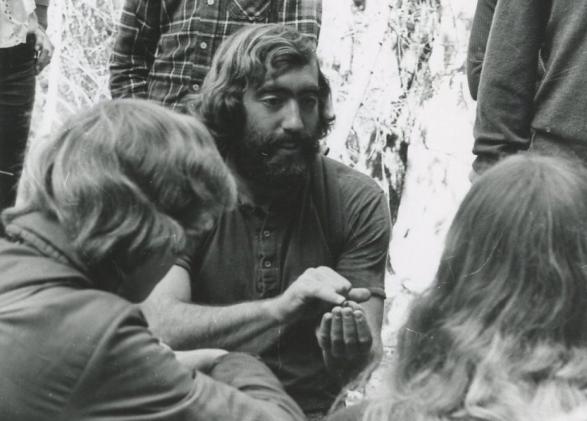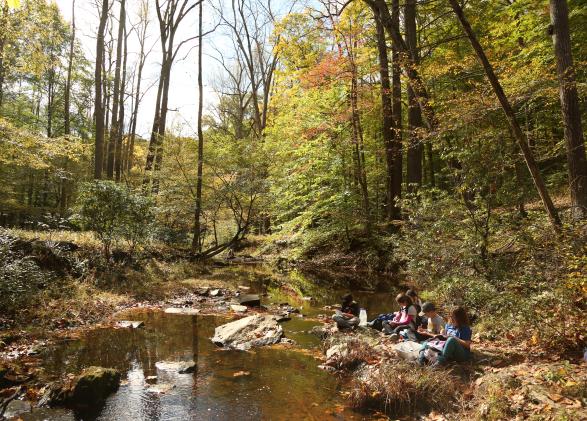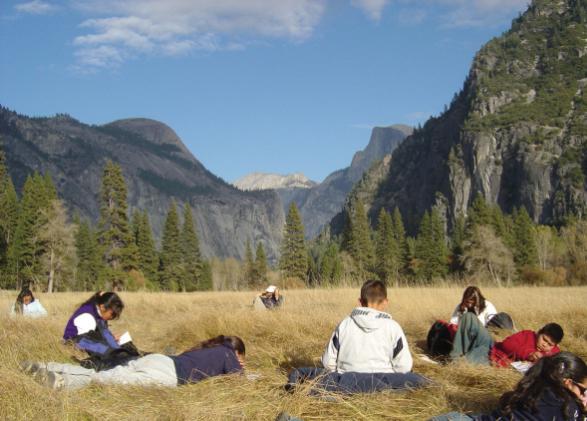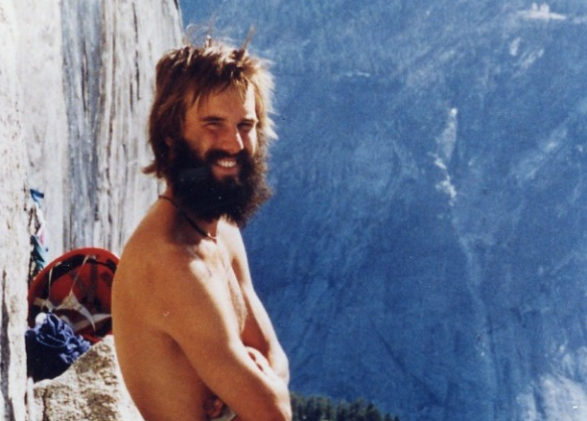
Stories from the Field

Jerry Edelbrock and the Origins of Olympic
Jerry Edelbrock is a builder: a builder of partnerships, a builder of people and a builder of visions. In 1983, long before the notion of a Yosemite Institute (YI) in Olympic National Park at the Rosemary Inn had come to fruition, Jerry was building the foundation for what was to come. Throughout his time building connections, infrastructure, and programming in Olympic, Jerry always went back to one question: “Is it in the best interest of the park?”

Sense of Place series: Welcome to Prince William Forest Park!
Welcome to the second park featured in our Sense of Place series: Prince William Forest Park. In 2012, NatureBridge opened its first east coast campus at Prince William Forest Park, the largest green space in the Washington, D.C. metropolitan area. Located just 35 miles from the city, this 16,000 acres of woodlands are where nature and history unite. Here, students explore a Piedmont forest ecosystem while challenging themselves physically, building meaningful relationships and discovering a caring relationship with the natural world.

Student to Steward: UC Berkeley Climate Program Director Ethan Elkind
This story is part of our series, Students to Stewards, focused on the incredible trajectories of former NatureBridge students. Specifically, the impact of their program experience on where they are today. Ethan Elkind’s trajectory from a NatureBridge student in the 1990s to a leader in climate change research today is not typical, but it is illustrative — a significant, transformative NatureBridge experience played a role in Ethan’s life that went beyond spurring appreciation of nature. Read our interview with Ethan where we talked about how NatureBridge informed his worldview, the biggest victories he sees in climate policy and why he’s thankful for one particularly infamous meteor.
Prince William Forest: A Small-Scale Wonder
Since March 2020, the Covid-19 pandemic has shut down the increasingly popular programs in Prince William Forest, where programs like NatureBridge are a rarity. The campus pivoted to distance learning and “school yard” programs with excellent results. Still, teachers and students have been clamoring for in-person programs to return as soon as it is safe to do so.

The 1997 Yosemite Flood
At the end of 1996, weeks of cold rain in California’s Sierra Nevada mountains gave way to warm, tropical rainfall. Unusual for that time of year, the warm, heavy rains melted the snowpacks, which began to run down the mountain into the valleys below, including Yosemite Valley. In early January 1997, with NatureBridge educators living at the park and students scheduled to arrive soon, National Park Service (NPS) officials did not close the park out of an abundance of caution; they closed Yosemite because one million gallons of water was pouring into the valley. Every five seconds.

The Baxter Award Part I: The Dream Imagined
“You know, there's the dream, and then there's reality,” says Kristina. “To take that dream and that concept, and then have to go and really fulfill it — that’s a whole other challenge. An amazing challenge that Matt would pump his fist about.”
To all who knew him, Matt Baxter was a passionate, kind, gentle, funny and ravenously adventurous person. The former NatureBridge educator, who died in a climbing accident in Yosemite in April 1996, inspired children and adults alike throughout his life. It is no surprise that he continues to inspire people after his death.

Vanessa Morel's job of "many hats" and the opening of NatureBridge's East Coast campus
On the eve of April 16, 2012, Vanessa Morel busied herself with last-minute preparations in Prince William Forest Park; in less than 24 hours, the first group of school children would be visiting for NatureBridge’s inaugural program in Prince William.
“I was like a mother hen that just couldn't settle,” says Vanessa, the Founder and Principal of NextGen Conservation who was NatureBridge’s first Washington D.C. Director at the time. “It was time for me to go home and leave it in the hands of the overnight staff, but I almost couldn't leave because I just felt this awesome responsibility. Would it all work out?”

Paula Bush and Dreaming a Better World with NatureBridge
As a science teacher, Paula Bush has long been an advocate for hands-on, out-of-the-classroom opportunities. For high school students, testing can be a huge obstacle. At NatureBridge, Paula was always thrilled that students were granted the opportunity to be curious without being tested. “We’ve killed curiosity in kids!” she said. “NatureBridge is important because it’s not about book knowledge: It’s experiential. You walk on a trail and all of a sudden learning is much more alive.” Most important was the continuity Paula found at NatureBridge: Tangible lessons that she could reinforce back in the students’ community about nature, being outdoors, caring for the earth and empowering leadership.

Commemorating NatureBridge (and America!) with Tom Medema
NatureBridge is celebrating its 50th anniversary this year. Five years from now, The United States will be commemorating its 250th. One of the lead people responsible for planning the 250th Anniversary Commemoration is Tom Medema, Acting Associate Director of Interpretation, Education and Volunteers at the National Park Service (NPS), former Chief of Interpretation and Education at Yosemite National Park and a longtime supporter of NatureBridge. We sat down over a video call to discuss how NatureBridge and the United States have made it to these milestone anniversaries, the expansion of historically excluded stories and the resilience required to build the future.